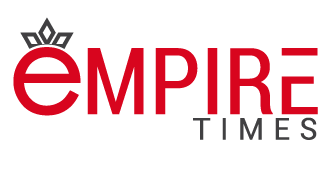Introduction
In the digital era, webinars have emerged as a powerful tool for real-time online learning, professional development, and interactive engagement. Whether for educational purposes, business growth, or community building, mastering the art of webinarach (webinar approach) can significantly enhance your ability to connect with audiences worldwide.
Understanding Webinars
What is a Webinar?
At its core, a webinar is a web-based seminar that allows for interactive participation through Q&A sessions, live chats, and polls. It’s a versatile platform that transcends geographical boundaries, making information and learning accessible to anyone with an internet connection.
Types of Webinars
Webinars come in various formats, from educational lectures and product demonstrations to expert panels and interactive workshops. Each type serves different purposes but shares the common goal of engaging and educating its audience.
Benefits of Webinars
The benefits of webinars are manifold. They offer a cost-effective way to reach a large audience, provide flexibility in terms of accessibility, and facilitate real-time interaction and feedback. For businesses, they’re a potent tool for lead generation and customer education.
Planning Your Webinar
Choosing a Topic
Selecting the right topic is crucial. It should not only interest you but also resonate with your target audience. Identify current trends, common questions, or challenges within your field as potential webinar topics.
Setting Objectives
Clear objectives guide your webinar’s structure and content. Whether it’s to educate, generate leads, or build community, having specific goals will shape your webinar’s success.
Target Audience
Understanding your audience is key to tailoring your content. Consider their background, interests, and what they hope to gain from your webinar. This insight will help you craft a more engaging and relevant experience.
Executing Your Webinar
Technical Setup
A seamless technical setup is fundamental. Choose a reliable webinar platform that supports your needs, test your equipment beforehand, and ensure a stable internet connection to avoid disruptions.
Promoting Your Webinar
Effective promotion is essential for attracting attendees. Utilize email marketing, social media, and your professional network to spread the word. Creating compelling content that highlights the value of your webinar can also boost registration.
4.3 Engaging Your Audience
Engagement is the heart of a successful webinar. Use storytelling, visuals, and interactive features like polls and Q&A sessions to keep your audience involved and invested in your content.
Post-Webinar Strategies
Follow-Up
Following up with attendees is a powerful way to extend the value of your webinar. Share additional resources, answer unanswered questions, and solicit feedback to improve future webinars.
Analyzing Feedback
Feedback is a goldmine of insights. Analyze it to understand what worked, what didn’t, and how you can enhance the webinar experience for your audience.
Future of Webinars
Trends and Predictions
The future of webinars looks promising, with advancements in technology making them more immersive and interactive. From virtual reality experiences to AI-driven personalization, the possibilities for innovation in webinar delivery are endless.
Conclusion
Mastering webinarach is not just about technology; it’s about creating meaningful, engaging experiences that educate and inspire. With the right approach, webinars can be a powerful tool in your digital toolkit, offering unparalleled opportunities for connection and growth.
FAQs
1. What is the best platform for hosting webinars?
The best platform for hosting webinars often depends on your specific needs, such as audience size, budget, and desired features. Popular options include Zoom, GoToWebinar, and Webex. Each platform has its unique strengths, such as Zoom’s ease of use and GoToWebinar’s robust analytics. Evaluating your requirements and testing a few platforms can help you find the best fit for your webinar needs.
2. How long should a webinar last?
A webinar should typically last between 45 to 60 minutes. This duration is long enough to delve into a topic in detail but short enough to keep the audience’s attention. Including a Q&A session at the end can extend the time slightly, allowing for interaction without making the webinar too lengthy.
3. Can webinars be monetized?
Yes, webinars can be monetized in several ways. You can charge a registration fee for attendees, offer paid certifications upon completion, or use the webinar to promote and sell products or services directly. Another strategy is to host free webinars that lead into a paid product or service, effectively using the webinar as a marketing tool.
4. What are the key elements of a successful webinar?
Key elements of a successful webinar include a compelling topic that resonates with your target audience, engaging and clear content, a reliable technical setup, interactive elements to keep the audience engaged (such as polls, Q&A sessions, and live chats), and effective promotion to ensure a good turnout. Post-webinar follow-up and analyzing feedback for improvement are also crucial for long-term success.
5. How can I improve attendee engagement in my webinars?
To improve attendee engagement, incorporate interactive elements like polls, surveys, and Q&A sessions. Use storytelling and relevant examples to make your content relatable and engaging. Visual aids, such as slides and videos, can help illustrate your points more effectively. Encouraging participation through social media or live chat during the webinar can also keep attendees involved. Finally, practice your delivery to be as clear and dynamic as possible, making the experience enjoyable for your audience.




